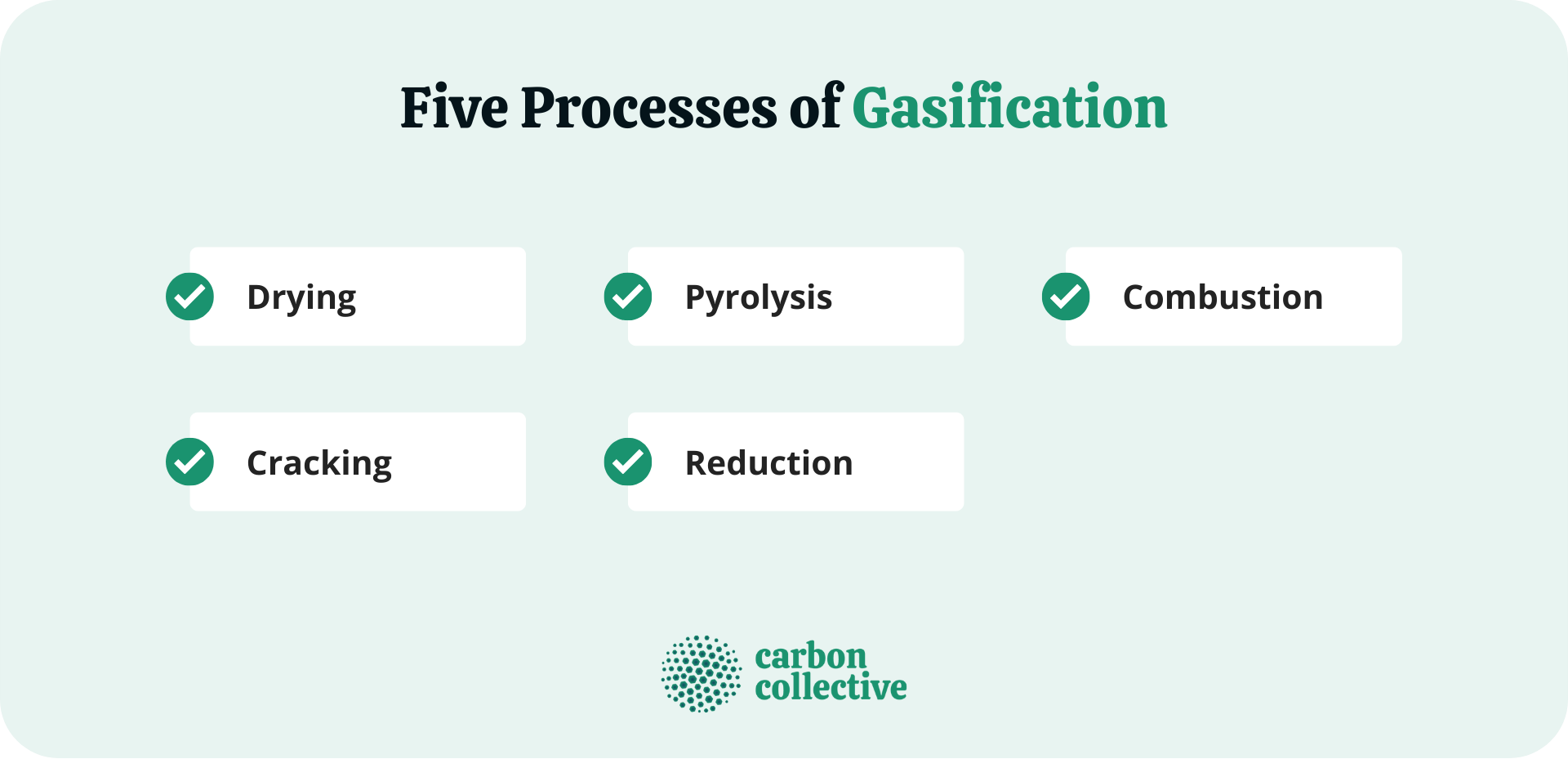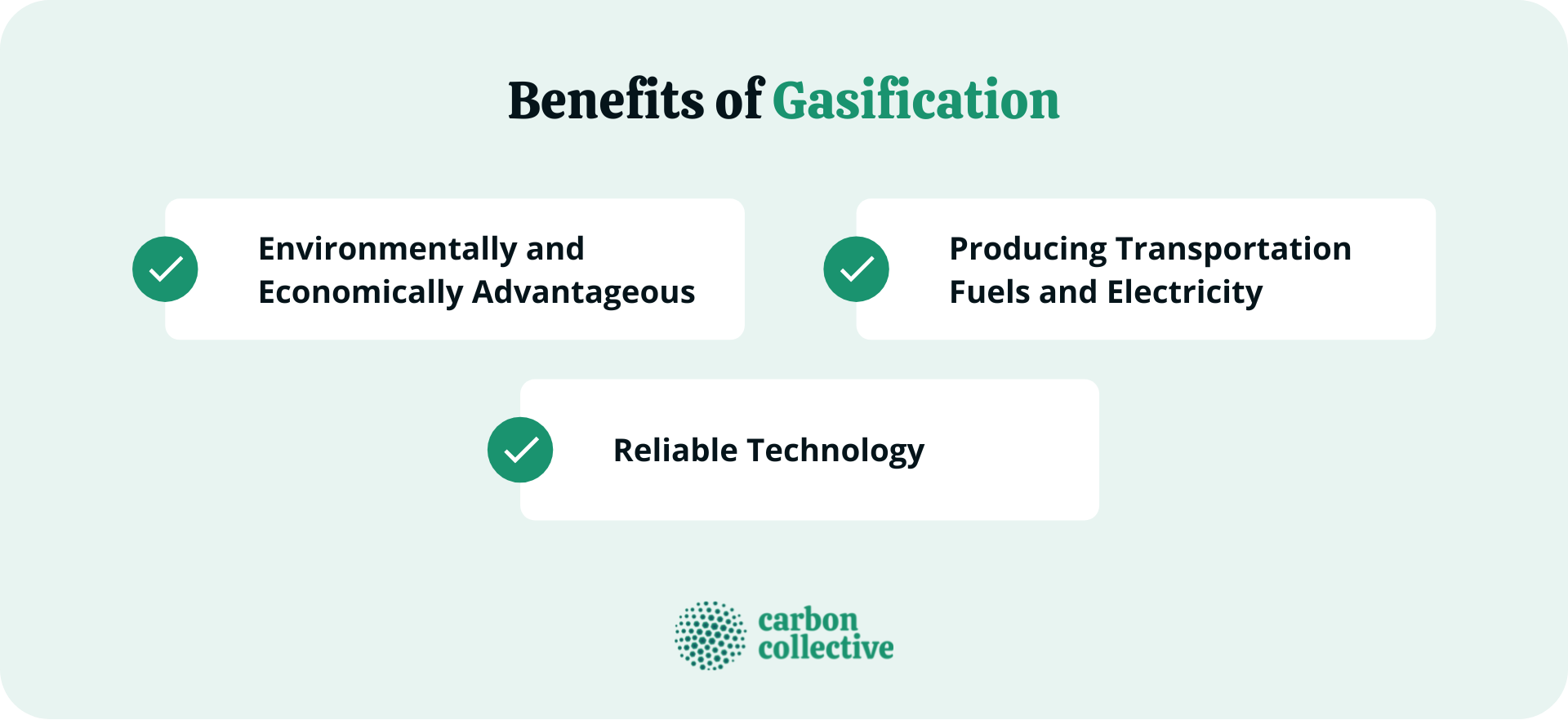Gasification is a technology that converts material containing carbon, such as coal, biomass, and waste, into synthetic gas.
As an exchange, it is used to produce electricity and other valuable products like chemicals, fertilizers, and fuels.
Gasification uses little or no air or oxygen in a closed reactor to directly convert carbon-based materials into synthetic gas or syngas, and it does not involve combustion.
The energy locked in biomass and municipal solid waste could be retrieved through gasification, transforming those materials into valuable products and removing the need for landfilling or burning.
Biomass is a renewable organic material from plants and animals. Biomass is a significant fuel in different countries, especially for heating and cooking in developing countries.
Using biomass fuels for electricity and transportation generation is increasing in several developed countries to avoid carbon dioxide emissions from fossil fuel use.
History of Gasification
The first gasification plants were built in the 18th century to produce town gas for lighting.
The process was later applied industrially to generate heat and power.
In the 1930s, synthetic fuel production from coal became important during World War II as crude oil supplies were interrupted.
In the 1970s, during the energy crisis, interest in gasification escalated as a way to generate synthetic natural gas from coal.
In the 1990s, environmental regulations favored cleaner processes such as gasification over traditional combustion.
Gasification can capture and utilize pollutants like sulfur dioxide (SOx), nitrogen oxides (NOx), and mercury that would otherwise be emitted into the atmosphere.
Nowadays, the application of gasification has broadened to include the conversion of biomass and waste into syngas to produce electricity, chemicals, and transportation fuels.
Five Processes of Gasification
There are five primary processes of gasification: drying, pyrolysis, combustion, cracking, and reduction.

Drying
In drying, the moisture in the biomass needs to be eliminated before it proceeds to pyrolysis.
With the higher temp process, all the biomass's water will get vaporized out of the fuel.
The more moisture, the more energy is needed for drying, with a lower gas enthalpy produced.
There is a typical heat transfer phenomenon during the heating, provided with a decreasing temperature profile towards the particle center. Hence, the greater the radius, the longer time required for the treatment.
Pyrolysis
Pyrolysis is fundamentally the process of charring and applying heat to raw biomass to break it down into charcoal and different tar liquids and gasses.
Once biomass's temperature rises above 240 degrees Celsius, it begins to decompose with heat rapidly.
The biomass breaks down into a mixture of solids, liquids, and gasses. The remaining solids are labeled charcoal, while the liquids and gasses released are called tars.
Combustion
The only net exothermic process of gasification is combustion. The combustion in a downdraft aims to get good mixing and high temperatures so that all the tars are cracked or burned and not present in the outgoing gas.
Primarily an issue of tar cracking in the combustion zone is solving the tar problem. The combustion products should ideally be CO and H20.
Cracking
The primary purpose of cracking is to further break down tars into gasses that can be used more efficiently. Tars are a mixture of light and heavy molecules that can condense and clog the gasifier.
Cracking breaks these larger molecules into smaller pieces so they can flow more freely and will not block the gasifier.
This is important in gasification because it helps break down the tars produced in pyrolysis into smaller, more manageable molecules.
Reduction
The final process of gasification is reduction, which reduces the oxygen content of the syngas to produce a fuel that will use more efficiently.
Reduction is made by passing the syngas through a reducing agent, such as carbon monoxide (CO).
Reduction is the direct reverse of the combustion process. Thus, a reduction is removing oxygen from waste products at high temperatures to produce combustible gasses.
Benefits of Gasification
There are many benefits of gasification that make it an attractive option for a variety of applications.

Environmentally and Economically Advantageous
The process of gasification transforms organic materials into hydrogen gas, carbon monoxide, and carbon dioxide.
Many biomass and waste-derived feedstock can be gasified, such as wood waste, aluminum, municipal solid waste, plastics, agricultural and industrial waste, crop residues, and sewage sludge.
Gasification can reasonably process both mixed waste and the plastic-only fraction of waste.
The process utilizes a smaller amount of air, resulting in the limited formation of pollutants such as nitrogen oxides and higher energy recovery efficiency.
The gasification of waste has many environmental advantages over incineration and other technologies.
Hence, gasification does not only provide benefits to the environment but also has economic advantages.
It can be applied to change lower-priced feedstock like coal into valuable products like fuels, fertilizers, and electricity.
Producing Transportation Fuels and Electricity
The gasification process can be applied to produce methanol and chemicals such as urea and ammonia, which are considered the basis of many fertilizers.
Gasification can also help make fuels for transportation from coal, oil, sands, and biomass.
The gasification of waste decreases the need for landfill space, reduces methane emissions, and decreases the use of fossil fuels. Thus, waste gasification is used to enhance programs for recycling.
Reliable Technology
For more than half a century in the refining, chemical industries, and fertilizers, gasification has been used commercially worldwide.
Plant operators have the chance to conserve resources and limit hazardous emissions as the uses for gasification broaden into the municipal and hazardous conversion of waste.
Final Thoughts
Gasification is a process that has many benefits and uses.
It is a reliable technology that can be used to produce transportation fuels, electricity, and chemicals.
Gasification is also environmentally and economically advantageous.
It is a process that should be considered when looking for ways to recycle or dispose of waste.
FAQs
1. What is gasification?
Gasification is converting organic or fossil fuel-based materials into syngas, a synthesis gas composed of hydrogen gas and carbon monoxide.
2. What are the five processes of gasification?
The five gasification processes are drying, pyrolysis, combustion, cracking, and reduction.
3. What are the benefits of gasification?
The benefits of gasification include being environmentally and economically advantageous, producing transportation fuels and electricity, and being a reliable technology.
4. Where does gasification come from?
The process of gasification has been used for more than half a century in the refining, chemical industries, and fertilizers. Only recently has gasification begun to be used for the municipal and hazardous conversion of waste.
5. What is the difference between pyrolysis and gasification?
The pyrolysis process thermally breakdown waste without air (and oxygen). On the other hand, gasification is a process in which materials are exposed to oxygen to some extent but not enough to allow combustion.
